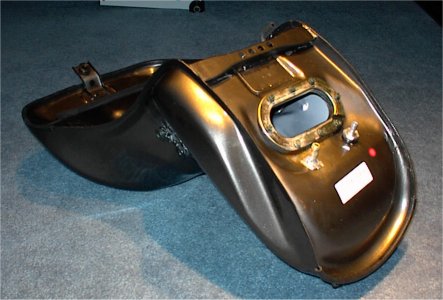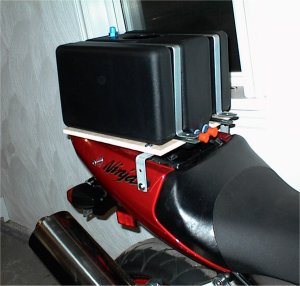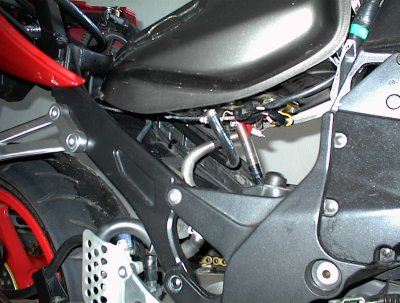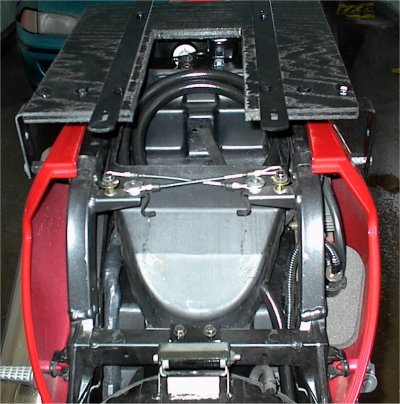The next problem was how to be able to use the fuel from the cell. The main decisions would be regarding where to plug in the fuel line from the cell and how to transfer it (fuel pump vs gravity).
One of my highest priorities was to avoid 'altering' the bike. After looking over the shop manual and discovering that the fuel pump was actually located inside the gas tank, I realized that I wouldn't be able to tee in the fuel line going into the pump. It became clear that I'd have to engineer the system to get the gas from the cell into the main tank.
I enjoy tinkering but alas have little knowledge about how most bits on a motorcycle actually work. After looking at the fuel injection system pictures in the shop manual, the fuel return line from the injectors into the tank became my next target. My concern was that if fuel is returned at too high a pressure from the injectors, the fuel cell wouldn't drain into it or even worse, the fuel would return from the injector and go up the piping into the fuel cell. The other problem was that there is a pressure valve where the return line enters the tank. Try as hard as I might, I wasn't able to pop the pressure valve open with my lungs, so it required significant pressure to open. I was afraid that the fuel would just sit in the tank and never drain down.
My brother-in-law, who's a mechanic suggested another possibility, that of installing another fuel fitting in the tank. This would involve drilling into the gas tank *gasp*. I really didn't want to do this at first, because it sort of goes against not doing anything permanent to the bike, but after looking at the options, it seemed to be the soundest idea. Off I went to the local gas-tank-repair-shop and they installed a 3/4 in. fitting that I bought from the local Canadian Tire. I had chosen an area where I felt there would be enough room to get the plumbing in under the tank.

You can see the brass fitting installed near where the fuel pump goes (big oval hole). In the picture the tank is upside down. The fitting is actually under the seat, at the lowest point in the tank.
With this system, I am confident that I'll be able to get fuel to flow from the fuel cell to the tank with gravity alone. My philosophy on this project has become "less is more". The simpler the design, the less likely it is to break down and leave me stranded / covered with gas.
I also want the system to be easily removable, for when I want the bike to be more of a proper sport bike instead of a Goldwing Supertourer wannabee. I considered getting a quick-release valve to unplug things but instead settled with using only the shut-off valve. The shut-off valve is important, because I only want to let the gas flow from the cell to the tank when the tank is almost empty. If I allow it to flow all the time, gravity will try to push gas into the tank and overfill it, resulting in gas coming out of the overflow pipe onto the ground.

Here's a picture of the shut-off valve. I had a hard time finding one of these. The ones I'd seen in the automobile parts places and elsewhere on the web were all much bulkier. I stumbled on a website dedicated to sport-touring and Long Distance Riding, (www.sampson-sporttouring.com). There I found the valve I was looking for. As they don't take credit card payments, I had to set up a PayPal account to transfer funds. Very good customer service though, pleasure doing business with Terry Smith.
When I'll want to remove the cell, I'll simply unhook the line as it enters the valve from the fuel cell. By turning off the valve, fuel will not escape the bike's gas tank, and when I'll be unplugging it, the fuel cell should be empty anyways, so there shouldn't be any mess.
I ordered some adapters to fit into my 3/4 in fuel line and set the whole thing up. I'm going to install the valve just behind my seat so I can turn it on and off while riding. I later did a leak test where I filled up the fuel cell and hooked up the line with the valve and everything was water tight.


